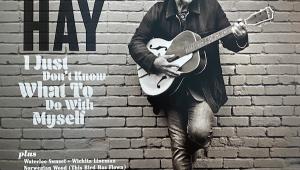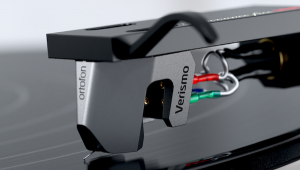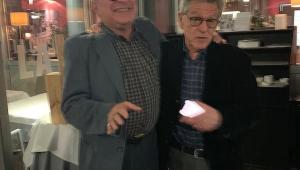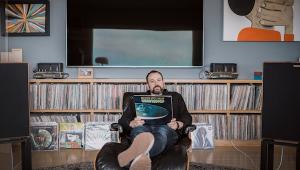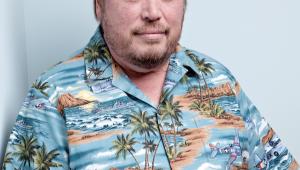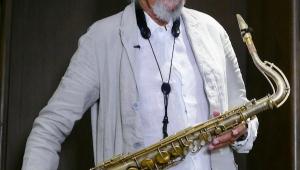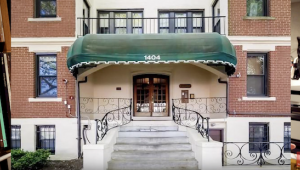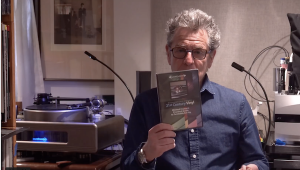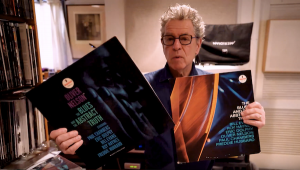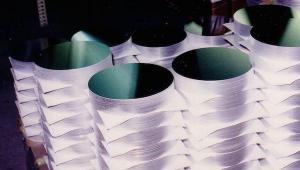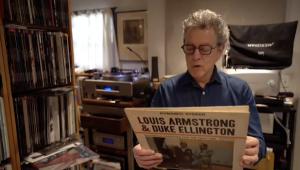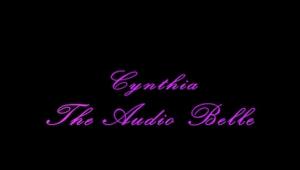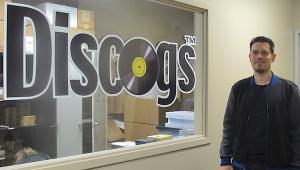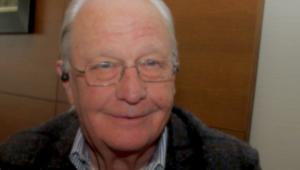Veteran Recording Engineer Roy Halee On Recording Simon and Garfunkel and Others-Part II
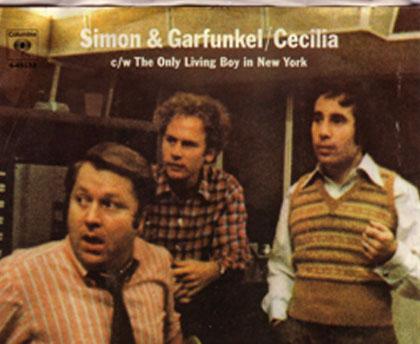
RH: Yea, well hey! It's fourth and fifth generation tapes! They lose tapes now. They had a foolproof filing system at one time. I don't know what happened. Anyway, here come these things in the studio, what am I supposed to do with this stuff? So my first reaction is send it back! I call CBS. I say “Hey, give me a break! Let's get the originals. I'll remix it. I'll do anything. Anything you want! I don't care. It's history, I want to do it right. Some of this stuff sounds very good.” I want it to sound very good. I don't want to beat it to death, but I couldn't get the tapes. So I'm thinking, “Do I do it or walk?” Finally, I decide to do it because otherwise, maybe whoever will do it, might make it worse. They'll come in with equalizers, suck out all the midrange… So I did it myself. So getting back to “The Boxer,” to this day I think that record stands up. It's 20 tracks, 4 totally wild-that is synched into the mix by hand. So from a technical standpoint it's quite an achievement.
MF: Getting back to the old days, when you made those recordings, was it a lot more fun in certain ways, doing all that experimenting?
RH: Enormous fun. But then when we went to do Graceland there was more of that kind of challenge, same with Rhythm of the Saints.
MF: You recorded all Paul's solo albums?
RH: Not all of them, no. There was a time when I ended up doing Artie's first solo album and there were some bad feelings going on so we just kind of split. Actually, I recommended to him that he use Phil Ramone because Phil was my favorite guy.
MF: Was he upset with you for working with Art? Or was it just a scheduling conflict?
RH: He was upset, of course. But I had to finish that record and it was fun too, because it was my favorite way of recording pop records and it still is, in the multitrack vein-the best sound is using two 16-track machines running in synch.
MF: As opposed to a 24-track?
RH: Absolutely. Or two 24-tracks, or digital. Talk about polish, presence, you don't have to use any processing-sort of like the old 35MM recorders. You have lots of head width.
MF: Before we get into the last couple of records, which obviously were huge successes, let's talk about The Byrds.
RH: I was out there in LA for a very short time working with Paul and Artie. We had that rhythm section out there-Hal Blaine [drums], Joe Osborne [bass], Larry Knechtel [keyboards]-they were doing everything. Those guys are the greatest. Hal Blaine is the greatest thing that ever happened to pop records. So anyway, Gary Usher asked me if I would do that twin eight-track thing I'd come up with, for The Byrds, because nobody else was doing that kind of recording. And I got to do Notorious Byrd Brothers and Sweetheart Of The Rodeo. But the guy who did the early Byrds stuff was Ray Gerhardt-great engineer.
MF: Who else did you record?
RH: Laura Nyro. I did New York Tendaberry. Again, I got burned by experimenting because I found that Laura going in and performing with a band didn't work. She couldn't perform what she did best with strict time in the studio. She was unbelievably great. If she could sit down at the piano and turn the lights down, and you could put candles-what have you-out, she couldl perform for you like you wouldn't believe. And that's been proven, because when she used to do Carnegie Hall dates, they'd sell out for years in advance and guys would storm the stage. She had magnetism beyond belief. Nothing could hold her back. So to get a performance from Laura live, accompanying herself on piano, and band, you had to do a lot of cutting. I came up with a idea-let's go in and spend a lot of time with her accompanying herself on piano, and overdub the band, but we didn't use an click tracks. And I think the piano vocal performances are the greatest on record.
MF: So who else did you do?
RH: I was doing Blood Sweat and Tears, Peaches and Herb-a lot of R&B stuff. Jazz stuff. I did stuff for the Dave Clark Five, The Yardbirds. I cut “I'm a Man.”
MF: Then you left Columbia?
RH: I finally left Columbia and went with A&R studios. Phil Ramone finally got me. I worked on Mitch Ryder and Frankie Valli sessions with Bob Crewe. Again at Columbia's old 799 studio. Phil is doing outrageous stuff out of there.
MF: When did you exclusively start working with Paul?
RH: Well, I started doing a wonderful project with Artie and a composer I adore-Jimmy Webb. They were going to do an album called The Animal's Christmas-it's not gonna sell, but I'm thinking digital is in now, and I want to get into it. This is a new thing. And it's going to be great, it's classical. We're going to cut the tracks with the London Symphony Orchestra. Well for one reason or another, that fell apart. Meanwhile, I get a call from Paul-we had just come off Concert in the Park.
MF: Great sound.
RH: That was a ball. That was done one take, one show, outdoors, in the cold, no repairs from the band, no band overdubs, but Art Garfunkel overdubbed some vocals. It was originally intended to be just a video. We may do the same thing with The Rhythm of The Saints tour, because Paul is doing a lot of the older material, and it may work out well, but we'll have to wait and see how the video comes out first. We're planning on shooting the shows in Brazil later this year.
MF: Are you traveling around with him on this tour?
RH: I started it in the rehearsal stage to set it up and get going, and I went out for the first two weeks. The “machine” is starting to run and I'm not needed.
MF: so let's bring it up to date now….
RH: Well let's go back to the Art Garfunkel thing and how I got involved in Graceland. There's also a digital story here. We went over to CTI in England-you should see the way they set up the orchestra there. CTI is a big studio near Wembly where they do a lot of music scoring, Lawrence of Arabia, you can go on and on. It's immense. They set up the orchestra totally out of whack with the way you'd set one up on a performing stage: brass up front, strings in the back: it's bizarre. And we're going to record this digital and analog-and I had a chance to work with the 3M system and that's why I know it's much better than the Sony, sonically. We bring the tapes back here and the analog is so much better,there's no comparison. The digital is so inferior compared to the Studer you couldn't believe the difference. I'll never forget it. But I say, “Let's stick with the digital.”
MF: Why?
RH: It's the new thing. I always say “Give it a shot.” This is what's going to be happening. It's shoved down our throat, the sampling rate is obviously too low, the sound is mediocre-and that's being kind. Bob Fine (of Mercury Living Presence fame) said the sampling rate was too low 20 years ago. It's too low. It's not high definition television, it's low (was this guy thinking ahead of his time, or what?—MF 2005). But if we walk away it'll never get any better, so we went ahead with it. As an editing tool, it's great. I could not have made either of these last two Paul Simon records without digital-well I could have, but it would have been a lot harder-and it would have added many more generations in the analog mode.
MF: And they were hard enough to engineer as they were.
RH: Really, and meanwhile Paul calls up and says “I got this exciting new project you may want to get involved with.” I say “great” and I'm off. Artie gets Geoff Emerick to finish it-a sweetheart . I got the CD. I couldn't believe what it sounded like (digital's fault, not Emerick's).
You know what pained me a lot? When we went down to Brazil, we finally found a good studio-Mazola (a reknowned Brazilian producer) had just opened a nice studio-they're very much into acoustics and woods down there, but they don't have a lot of equipment. But Mazola had managed to put in a G series SSL board-the newest.
MF: I've heard that SSL boards are bright sounding.
RH: The old ones are, the new series is more musical. If that console is operating the way it was designed to operate and not with the faders barely cracked open, or wide open, they're fine sounding consoles. We go there and do these tracks for Rhythm Of The Saints, analog obviously, and I think we got a lovely warm, open sound-three percussionists playing live. Hands on skins which is hard to record properly-it sounded live. We did it on Studer A-800 and then overdubbed bits and pieces. And then we brought it back to New York…
MF: And at this point Paul was experimenting-he was just recording long rhythm tracks.
RH: Correct. Now we gotta go back, edit out the mistakes and make the grooves more conducive to having a song written on top of it. So how do we do this? First we have to get rid of the mistakes-there's hitches and glitches and they have to be cut out of there. Plus, well those three bars are great, let's repeat them here and here, so we're going to copy them.
With analog that means a lot of razor blade editing and recopying, and second generation and third. Now I'm thinking to myself, “Do I do this?” When you go second generation 24-track without any noise reduction you've got problems, plus the noise on the analog from down there is far louder than in a good studio in New York-I think it's in the alignment of the machines, or the wiring, or the funky power. So you may say why not get rid of the noise down there? They have Dolby SR. I said, I'm going to be a real purist in the sense, I want to compare Dolby SR to the live. So I recorded them and then played it back and had them synch up to it live like we were doing an overdub and I just A/B-ed back and forth between live and SR and the difference is night and day!
MF: How about them playing live versus the non-Dolby recording?
RH: Perfect! Just a little bit of “ssss.” The SR took out the transient response, I thought. Gone. A guy on a fine bell? Gone. Dolby SR colors the sound. It works, but it colors the sound. There are a lot of instances where you can get away with it, but not here. So we went for the pure thing. Now I'm back home so what do I do? Do I cut it? No. I put it on the Sony 3324 and use it as an editing tool. I do whatever I want. If Paul wants to copy it 25 times, fine.
MF: Is there any generation loss making digital copies?
RH: Let me tell you what happened. We put it on the 3324. Here's the first shock, analog to digital-the 3324 with its Apogee filters and all of those modifications. We're A/B-ing between the analog and digital-no VCA's (faders) on the console-some people think they degrade the sound…well the difference was night and day. It made me sick. I said to my assistant, “Richie, do you believe this?” I wish he was here right now, he'd back me up. He said “I don't believe it.”
MF: so what do you say to those engineers who say this is a perfect medium? That what you put in is what you get out. Why do they say those things?
RH: I can't understand it. It is the medium, it is happening-that's the only way I can figure it.
MF: So what happens when they record symphony orchestras on the 3324?
RH: For what it does to symphony orchestras-even though there's no hiss or flutter and all the rest, well there's no excuse for using it in my opinion.
MF: But all commercial label classical music is recorded digitally today.
RH: Oh (pained sound), I know.
MF: Isn't it ironic that all of the rock and roll “Neanderthals” are still using analog because it sounds better, because they choose better sound, and the classical “good taste” people are going digital?
RH: Yes. Absolutely! Unbelievable isn't it?
MF: And you engineered Graceland basically the same way as Rhythm Of The Saints?
RH: Basically the same way, because I had to edit, edit, edit to create a long song, because there is no song. You don't go into the studio with a banad like you did in the old days. That's not the way these records were made. Rhythm Of The Saints was made as rhythm tracks-that's it. Nothing but percussion.
MF: And then after you were done getting everything onto 3324, you mixed it down to analog. What advantage would there be to that once you had it in the numbers domain?
RH: Let's go back one. Wherever I could record analog and retain it, I did. I ran a second analog machine to retain as much analog as possible. And that's what I did with horns, anything Michael Brecker did-so I could retain a little bit of the analog.
MF: Oh. So that way when you mixed down to analog, some of the stuff was left all analog.
RH: Yes, that's right. Now with Paul's vocals, I really wanted to put those on the analog machine but the digital is a great tool. If you want to cut from here to here to here? Boom boom boom and it's done. It's great! I had up to ten edited masters. Ten. And when Paul goes in to do the vocals it's great because there are five empty digital tracks. He goes in and sings a song four times. Easy so far, mix a word, a line from this track, some from that, and you make up a composite. Take that, put it away. A week later he does it again. Composite the composite. Composite the composite ad infinitum. Obviously digital works well here.
MF: Will there be a 100K sampling machine that will make this better?
RH: I doubt it.
MF: So getting back to the original question I asked you: When you go in to mix a record, how much do you have to compromise your values-what you would like it to sound like against Nineties sound values?
RH: I don't even equate it because I don't like what I hear today. I just do what I want to do. What I have to do. Whatever satisfies me. And I keep experimenting—I hope in good taste.
You'll find a partial Roy Halee discography here


